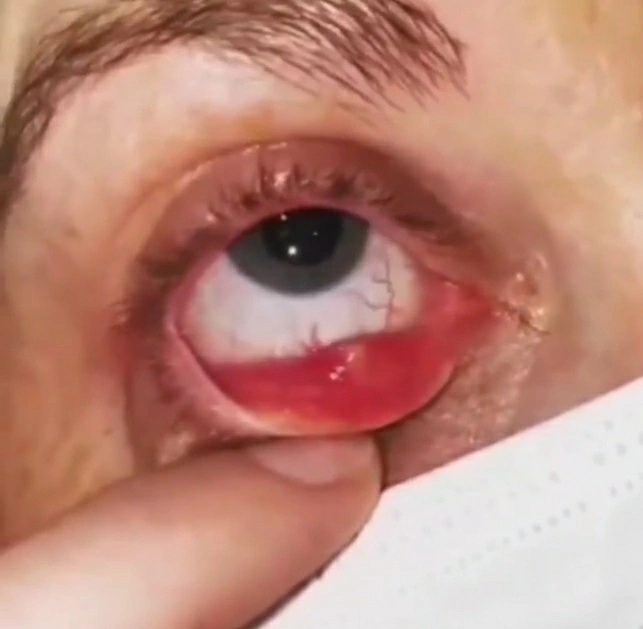Stye (hordeolum) : Symptoms and Causes
Summary :
◉ What is a stye?
A stye is a common, mild infection that forms within a few days on the edge of the upper or lower eyelid centered on the root of an eyelash.
It usually forms when an eyelash sebaceous gland (secrets sebum) or a sweat gland (secrets sweat) becomes blocked and infected (usually with staphylococci).
A stye is similar to a red bump, a boil, an acne pimple or a small red pimple filled with pus. This abscess should not affect vision, but can cause several discomforts: pain, itching, foreign body sensation. etc
It usually lasts one to two weeks, even if no treatment is received.

Stye also called "Hordeolum"
◉ What causes styes ?
Usually it is a combination of a sebaceous gland (Zeiss gland appended to the eyelashes or Meibomian gland) or a sweat gland (Moll's glands) clogged and a certain type of bacteria.
The germs in question are typically from the staphylococcal family, 90% to 95% of cases of styes are due to Staphylococcus aureus, Staphylococcus epidermidis being the second most common cause.
◉ There are two types of styes :
1- External styes: the most common type, they form on the outer part of the upper or lower eyelid. It can be caused by an infection of:
- An eyelash follicle: these are small holes in your skin from which eyelashes grow.
- The Zeiss gland: is a unilobaric sebaceous gland located at the edge of the eyelid. This gland produces an oily substance called sebum, which keeps eyelashes soft.
- The Moll Gland: Is an apocrine sweat gland located next to the base of the eyelashes on the edge of the eyelid.
2- Internal styes: They form on one of your inner eyelids (facing your eyeball). An internal stye is usually caused by an infection of the meibomian gland which produces oils that help keep the eyelid moist.

External stye

Internal stye
◉ Symptoms of Stye
Signs and symptoms of a stye include :
- A painful red bump that looks like a boil or pimple along the edge of the eyelid near the eyelashes.
- Itching.
- The skin around the stye may be swollen and red.
- Scab along the eyelid.
- Sensation of a foreign body in your eye.
- Your eye may be red, light-sensitive, and watery, but your vision should not be affected.
Note : Symptoms of a stye are not specific and may resemble other health problems.
◉ What are the risk factors?
Anyone can have a stye. However, the risk of having a stye is higher if you have:
- A history of styes.
- Other conditions such as rosacea, dry skin, seborrheic dermatitis, high lipid levels or diabetes.
- Other eye conditions such as an inflamed or infected eyelid (blepharitis).
- The habit of often rubbing the eyes
- Do not thoroughly wash or disinfect contact lenses before inserting Wearing contact lenses.
- The habit of leaving eye makeup on overnight or using old or expired cosmetics.
◉ Is stye contagious?
Styes are usually not contagious, people cannot pass them on to each other. However, as certain bacteria are involved, be sure to wash your hands thoroughly after touching a stye.
Stye : Symptoms and Causes Stye : Diagnosis and Treatment


